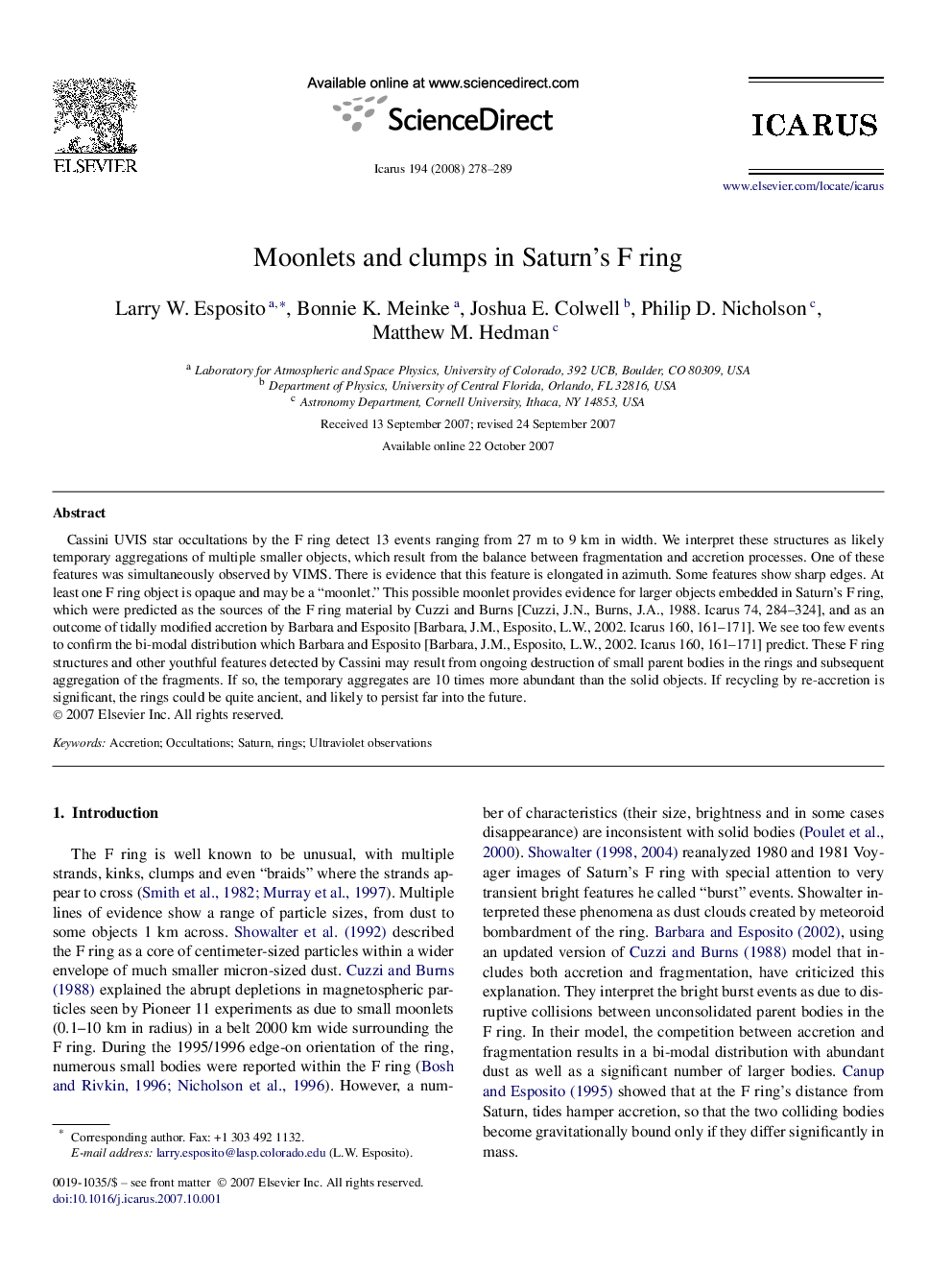| Article ID | Journal | Published Year | Pages | File Type |
|---|---|---|---|---|
| 1774938 | Icarus | 2008 | 12 Pages |
Cassini UVIS star occultations by the F ring detect 13 events ranging from 27 m to 9 km in width. We interpret these structures as likely temporary aggregations of multiple smaller objects, which result from the balance between fragmentation and accretion processes. One of these features was simultaneously observed by VIMS. There is evidence that this feature is elongated in azimuth. Some features show sharp edges. At least one F ring object is opaque and may be a “moonlet.” This possible moonlet provides evidence for larger objects embedded in Saturn's F ring, which were predicted as the sources of the F ring material by Cuzzi and Burns [Cuzzi, J.N., Burns, J.A., 1988. Icarus 74, 284–324], and as an outcome of tidally modified accretion by Barbara and Esposito [Barbara, J.M., Esposito, L.W., 2002. Icarus 160, 161–171]. We see too few events to confirm the bi-modal distribution which Barbara and Esposito [Barbara, J.M., Esposito, L.W., 2002. Icarus 160, 161–171] predict. These F ring structures and other youthful features detected by Cassini may result from ongoing destruction of small parent bodies in the rings and subsequent aggregation of the fragments. If so, the temporary aggregates are 10 times more abundant than the solid objects. If recycling by re-accretion is significant, the rings could be quite ancient, and likely to persist far into the future.
